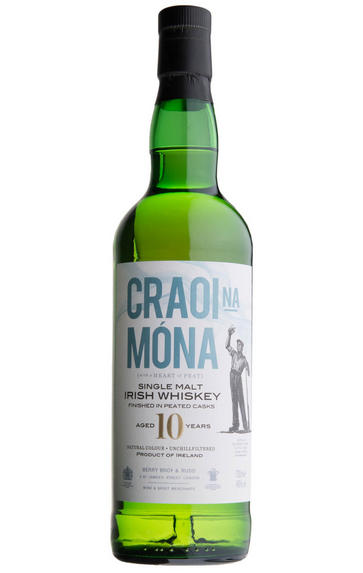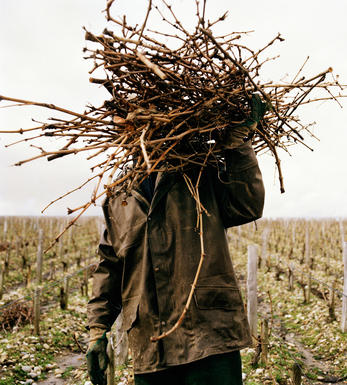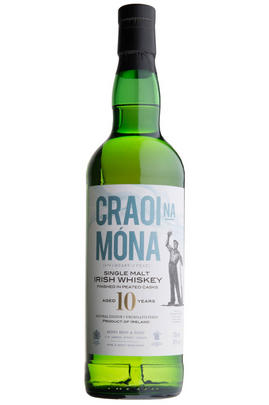
About this SPIRIT

Cooley Distillery
Cooley is the only Irish whiskey distillery established in the entire 20th century and is now the only Irish-owned independent whiskey distillery. It is located in the north-east of Dundalk and is also known by its old name John Locke's. The plant was designed originally for the production of neutral spirit from potatoes with the production being switched over to whiskey with the acquisition through Cooley's in 1989.
It produces many different whiskeys, including single malts and blends. The distillery bottlings are Tyrconnel (single malt), Kilbeggan (blend), and Connemara (peated-smoked single malt). Apart from brands Cooley provides a full range of Irish whiskeys to 23 of the top 25 retailers in Europe. Cooley also distils quality whiskeys such as Knappoque, Clontarf, Brennans and Hennessy for international drinks companies.



Buying options
Add to wishlist
Description
Craoi na móna is pronounced “Cree Na Mona" and in Gaelic means Heart of the Peat Bog.
Peat has traditionally been used in the drying of barley in both Ireland and Scotland and it is normally this process that lends a ‘peated’ whiskey its distinctive smokiness. In reality there is another way to add a smoky smack to whiskey: Finishing. This is what we have done with this batch of Craoi na Móna. In fact, after maturing for 10 years in Ireland in American Oak casks we shipped it over to Scotland where it spent a few short months in casks that had previously matured heavily peated Islay malt. These casks, though emptied, still retained a huge smokiness we wanted to bottle. We weren’t sure what would happen, but are categorically pleased with the results. We hope you agree that the heart of this Irish whiskey is greatly enriched by its smoky, peated character.
Nose: Good hint of peat. Charred wood and some burnt grassy notes- flowers, bracken and ferns. A little yellow fruit- lemon meringue, sugared almonds and some rhubarb.
Palate: Very smooth with some sweetness building to control the peat-smoke and medicinal notes. Peaches and cream, orange citrus and rosehip.
Finish: Quite long, smooth and moreish.
spirit at a glance
Delivery and quality guarantee